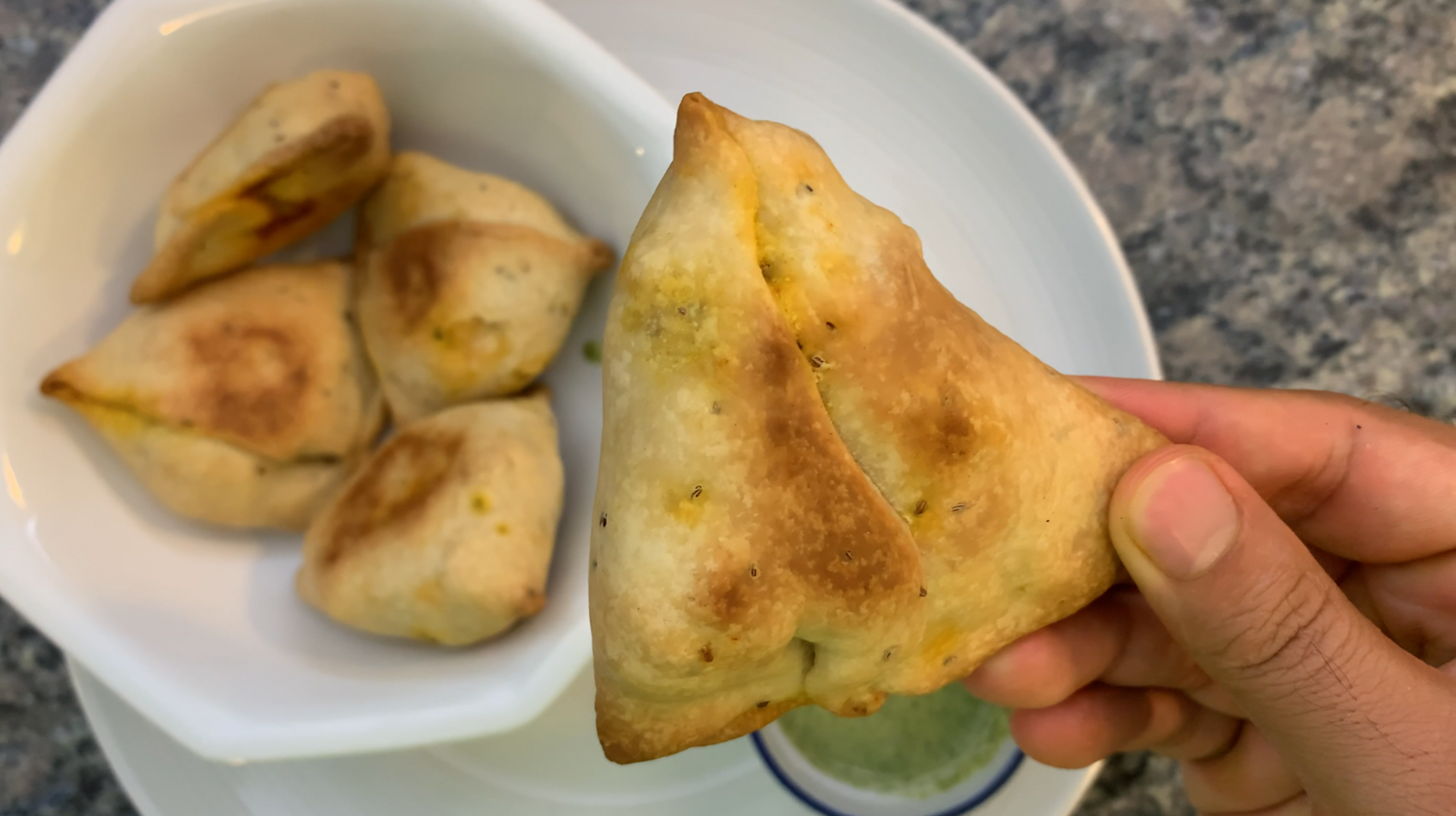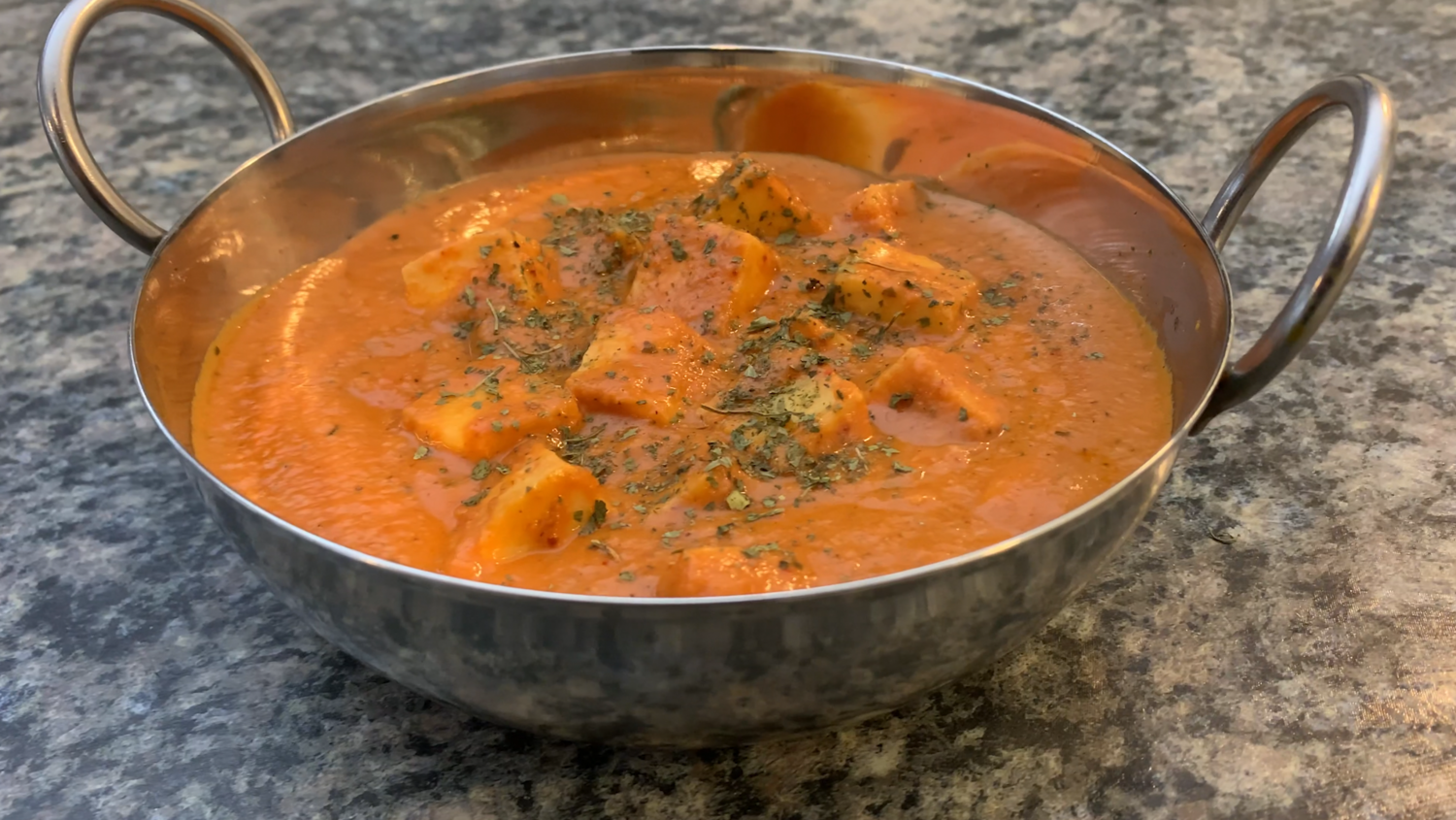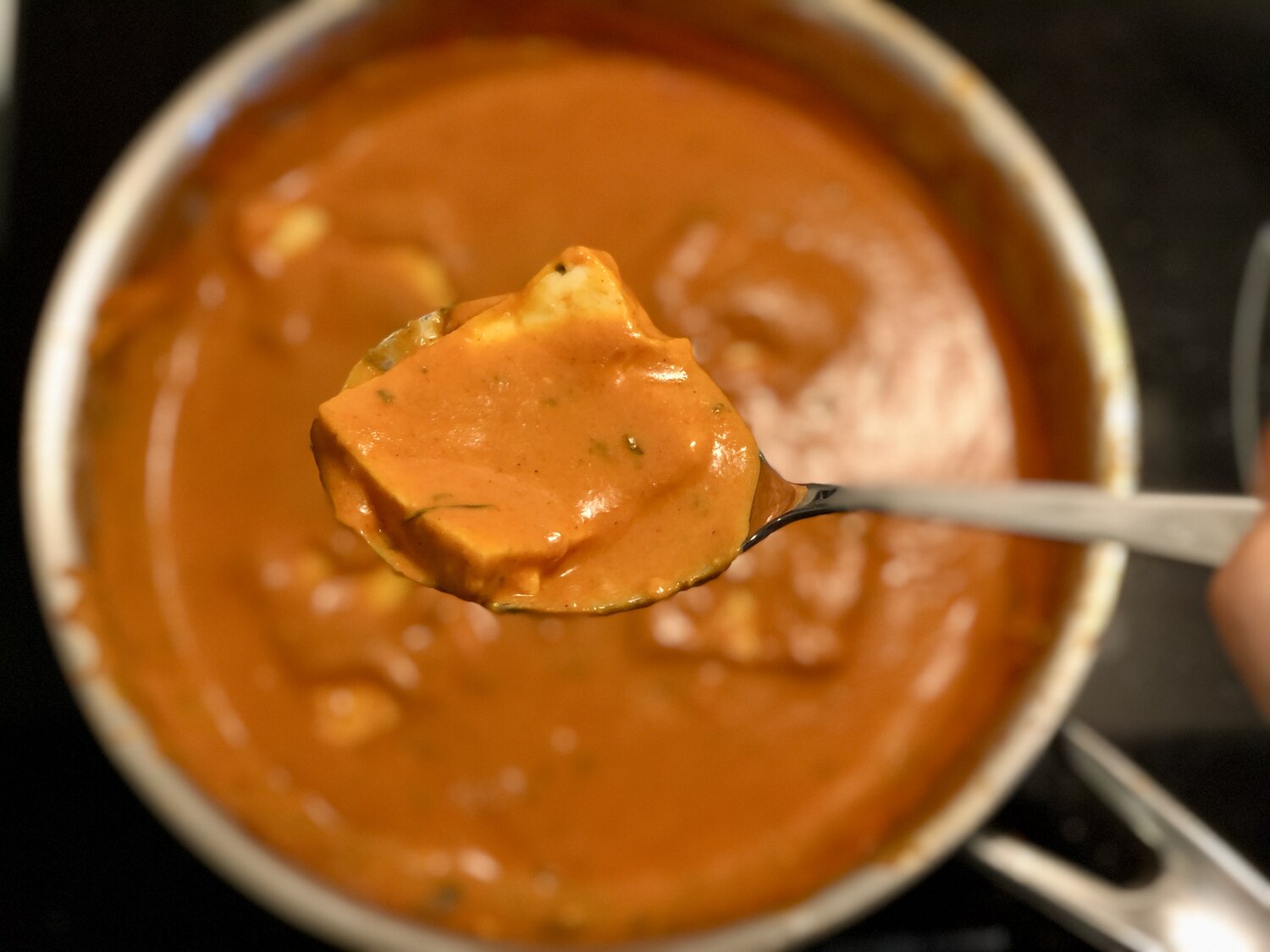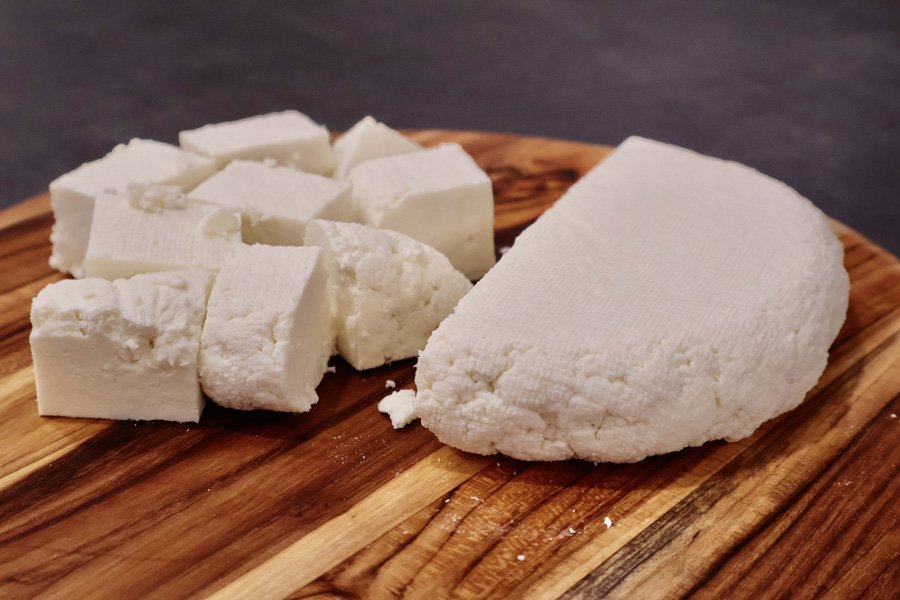The Ultimate Guide On Making Fresh Homemade Paneer
This post may contain affiliate links. Read our disclosure policy
This post was originally published in November 2021. It has been updated June 2025 with updated instructions and higher quality images.
For a lot a vegetarians in India, paneer is referred as the vegetarian version of chicken. Paneer is skewered, roasted and added to curries, but above all, immensely!
Watch How to Make Fresh Homemade Paneer Here:
Paneer is soft, luxurious and is to this date the ultimate treat in my vegetarian household. Be it Palak Paneer — paneer in a creamy spinach sauce), Shahi Paneer – paneer in a tomatoey sauce rich with nuts and cream or Paneer Tikka — my favourite appetizer, big chunks of tandoor grilled paneer which transports you to a world of euphoria.
I always say that paneer is the best vegetarian protein source. It truly is a blank canvas that you can incorporate in your cooking as you would chicken or tofu. I personally find paneer more delicious than tofu, as it’s softer and it has its own mild taste! It’s perfect for marinades, to grill, to barbecue, to bake, or to add directly into curries! You can do so much with paneer!
If you’ve never had paneer before you’re in for a treat! Even if you’re not a vegetarian, I guarantee that if you try a paneer dish where you may normally have chicken, you won’t miss the meat at all! If you’re looking to switch up your menu and eat less meat, then paneer is going to rock your world!
What is Paneer?
Every time I answer this question, I say “Indian cottage cheese.” However, don’t think you can substitute with cottage cheese! I did this when I first came to Canada when I wanted to make Paneer Makhani, and let’s just say while I hate food waste, the dish was inedible and it was a huge disappointment.
Paneer is described this way because it is a soft cheese, however. Paneer is made by curdling milk. Recipes use a combination of whole milk with either vinegar, lemon juice or yogurt. In this recipe, I’ll be using a combination of whole milk and butter milk.
Paneer is the protein source for so many popular Indian curries! Here are some popular ones:
Why Make Paneer at Home?
Personally, I would never make homemade paneer if I was still living in India. You can walk up to any grocery store in India and grab all kinds of fresh paneer to use in their home cooking. Options are much more limited when you come to North America. As of 2019, I have not found a store where I can buy fresh paneer in my area. There seems to be a monopoly on the brand which is offering paneer and hand on heart, having had the real thing — it is a bit of a let down. It does not have the soft texture and absorption properties that fresh, real paneer boasts. However, to be totally transparent, I almost buy it from the store anyway, simply because when you make it at home you do need a lot of milk but it doesn’t yield that much!
Furthermore, the process to make paneer at home is for the most part easy with one catch. Patience. I would have to admit this is a treat given the time and ingredients used to make this. Every time I do make it myself, however, I have to admit it’s way better than what you get at the store!
Here are reasons why you should make your own paneer!
You can’t find it packaged anywhere
Fresh and preservative-free
You can make it organic if you use organic ingredients
Tastier and softer than store-bought
Rewarding! It’s a lot of fun to see how all that milk turned into a delicious soft cheese!
Ingredients for Fresh Homemade Paneer
Believe it or not, you only need two ingredients to make Fresh Paneer from Scratch, so you won’t be breaking the bank with this! Remember to scroll to the bottom of this post for the FULL PRINTABLE RECIPE CARD to see the quantities for each ingredient and for all the instructions to save for later! You can easily scale the amounts based on how much paneer you want to make! Here’s what we need:
Milk: You can use 2% milk in place of whole milk but I wouldn’t recommend going below 2%. After all, you are extracting milk solids from the milk to make paneer which includes some fat. Skim milk or 1% would never have enough of fat content to make enough - if any - paneer. For best results, I would recommend whole milk. I’ve used both 2% milk and whole milk and using the whole milk made it much tastier and even softer!
Curdling agent: Options here are vinegar, lemon or lime juice, yogurt, or buttermilk. I’ve found the best results are with buttermilk. You get extra creaminess in your paneer while still getting that acidity, and it’s not overpowering in taste.
You’ll also want to have a non stick pot to boil your milk, a colander to strain out the liquid, and a cheesecloth to get the milk solids!
How to Make Paneer
To get going, you want to add 2L of whole or 2% milk in a large pot and heat the milk to the slowest boil on medium heat.
As soon as you get to this stage, turn the heat low and heat the milk until it starts to foam. Be sure to stir the milk from time to time so that it won’t burn.
This will impart a strong burnt flavour in the paneer. Here is where the patience part of the recipe comes into place. You can use a thermometer to check when the milk is below the boiling point and ready to be curdled - around 194 F to 203 F.
As soon as the milk starts to foam, add 250 mL of buttermilk or 120 mL of lemon juice or lime juice. Give it a quick stir. You will soon notice that the milk will start to curdle.
The milk will start to separate. Collect the “paneer” or “chenna” towards the center of the pot. As soon as the liquid that has separated starts to look thin like water, cover the pot and set it aside for 15-20 mins.
As the pot cools down, prepare for the final step. Taking a large piece of cheese cloth, at least 13’ x 13’ in length, lay it out on a colander or strainer and place it on a large bowl to collect the liquid.
Using a skimmer, gently transfer the chena from the pot and place in the cheese cloth. Be careful as to not break the chena. I call this chena because believe it or not, this used to be a delicious breakfast.
Every other morning, we would have fresh chena, which is basically paneer which is still hydrated on toast with a fresh tomato chutney. Absolutely Delicious!
After you have transferred all the chena to the cheese cloth, tie the ends of the cheese cloth together and squeeze to extract as much water as you can.
Now you have two options: the slow method or the fast method. If you have extra time on your hand, 24 hours or more, tie the cheese cloth to your kitchen sink and let gravity give you a helping hand. After 24 hours, all the excess water would have dripped out and you would have a handsome hunk of fresh paneer.
To speed things up a bit, which is what I did, transfer your paneer from the cheese cloth to a plate and place something heavy like a stainless steel pan or cutting board on the paneer, yes on it and balance heavy items such as unopened cans of beans, tomatoes to apply pressure. Within 2-3 hours, all the excess water would have dripped out.
At this point you may use the paneer in your dish. This would make about 250 to 300 grams of paneer. I generally like to use this over a period of time given all the time I just spent to make it!
answering your questions!
How Long Does it Take for the Milk to come to a Simmer?
Depends on the amount of milk you are using. To bring about 3.5 Litres of milk to a simmer, it took me about 20-25 minutes on medium heat. Also, you don’t want to rush it because having the heat to high would risk burning the milk.
Keep stirring often while you wait for the milk to come up to a simmer.
Why Won’t the Milk Curdle?
You may see some recipes for paneer where you turn the heat off the moment you add the acid. This could be buttermilk or vinegar or lemon juice. But this only works if you have unhomogenized milk, directly from the cow/buffalo.
If you bought your milk at the supermarket or grocery store, you’re most likely purchasing homogenized milk. In this case you would need to keep the heat on while stirring until the milk has finished separating.
What is the Difference between Chenna and Paneer?
If you’re following the blog, you may have seen a few days ago I shared my Chenna recipe! Chenna is actually the intermediary step to making paneer. Chenna is the excess from the curdled milk that has not been pressed on. Chenna is more moist than paneer. Chenna is used for Indian sweets, or you can serve it savoury with Tomato Chutney and buttered toast!
Is Paneer Farmer’s Cheese?
When I shared my chenna recipe, a viewer pointed out that Farmer’s Cheese is made in a very similar method. I got curious so I decided to further investigate what exactly Farmer’s Cheese is, and if it’s actually the same as either paneer or chenna. Turns out that Farmer’s Cheese is neither chenna nor paneer, but a step in between the two. For chenna, you don’t need a cheesecloth to make it. However, you use a cheesecloth to make Farmer’s Cheese. However, you don’t need to press weight down to make farmer’s cheese, it’s instantly ready!
Storing/Freezing the Paneer
Portion these out into cubes, individually wrap them in plastic wrap and freeze the ones I plan on using later. GO AHEAD now and treat your guests, family or even your self to a hearty paneer dish which was made with so much love. Hope you found this recipe easy to follow, and be sure to comment below if you gave it a try!
Let me know what you think of this recipe in the comments! If you’ve tried this recipe, be sure to post it on social media and tag it with #cookingwithanadi and mention me @cooking.with.anadi. Thank you!

Fresh Homemade Paneer
For a lot a vegetarians in India, paneer is referred as the vegetarian version of chicken. Paneer is skewered, roasted and added to curries, but above all, immensely!
Ingredients
- 2 L whole or 2% homogenized milk
- 250 mL buttermilk OR 120 mL to 160 mL of lemon or lime juice
Instructions
- In a large pot, add all of the milk. Heat on medium heat until the milk comes to a slow boil.
- Reduce heat to low and heat milk until it starts to foam (you may need to cover the pot if this takes too long). Keep stirring from time to time to ensure the milk does not stick at the bottom of the pot. You can use a thermometer to check when the milk is below the boiling point and ready to be curdled - around 194 F to 203 F.
- As soon as the milk starts to foam, add 250 mL of buttermilk or 120 mL to 160 mL of lemon or lime juice. Give it a quick stir. You will soon notice that the milk will start to curdle.
- Using a spatula, collect the “chenna” or paneer from the sides of the pot towards the centre. Continue with this process until the liquid becomes thin, reaching the consistency of water.
- Turn off the heat, cover the pot with a lid and set aside for 15-20 minutes.
- In the meanwhile, place the colander/strainer over a large bowl and place the cheese cloth exceed the entire surface of the colander/strainer.
- Once the milk/paneer has cooled for 15-20 minutes, transfer the paneer to the cheesecloth laden colander/strainer using a skimmer.
- Once all the paneer has been transferred, tie the ends of the cheesecloth together and squeeze until you extract most of the excess water (Note: if you want to have chenna on toast with tomato chutney, you may use the paneer as is without squeezing the cheese cloth).
- Next, transfer the paneer on a large plate and place a heavy cutting board or pan on top. Add weight by stacking unopened cans and let any remaining water come out of the paneer for 2-3 hours.
- Your paneer is ready to use in any of the delicious dishes on my blog! Enjoy!
Nutrition Facts
Calories
283.71Fat (grams)
10.78 gSat. Fat (grams)
6.84 gCarbs (grams)
27.85 gFiber (grams)
0.00 gNet carbs
27.85 gSugar (grams)
29.19 gProtein (grams)
19.16 gSodium (milligrams)
365.28 mgCholesterol (grams)
43.84 mgNutrition info is an estimate.
Follow me
Meet Anadi
Welcome to Cooking With Anadi. This platform is all about making cooking exciting and finding new ways to bring classic flavours and recipes at your service. Join me in my personal journey in the world of cooking. Hope you have a great ride!




































































